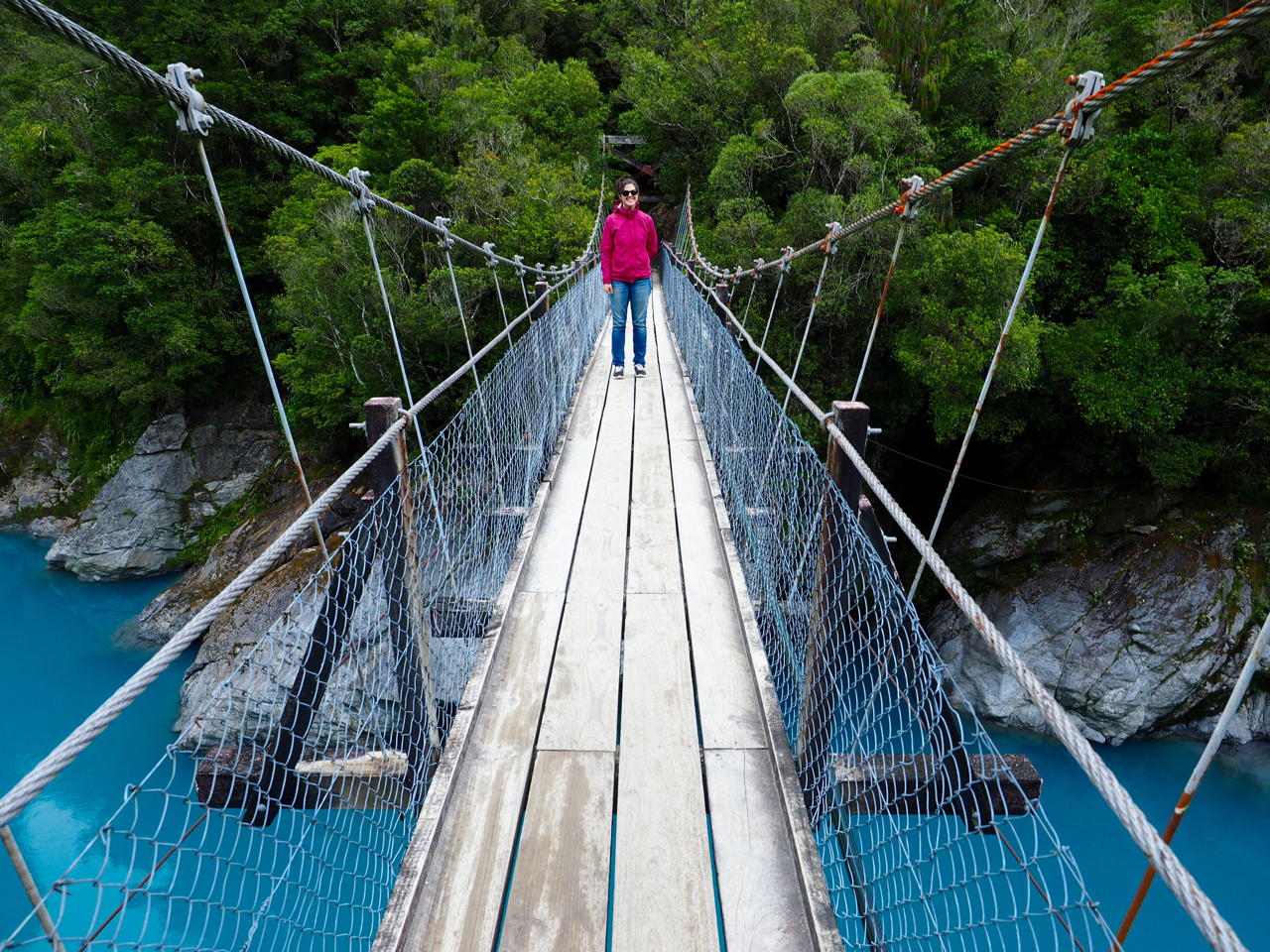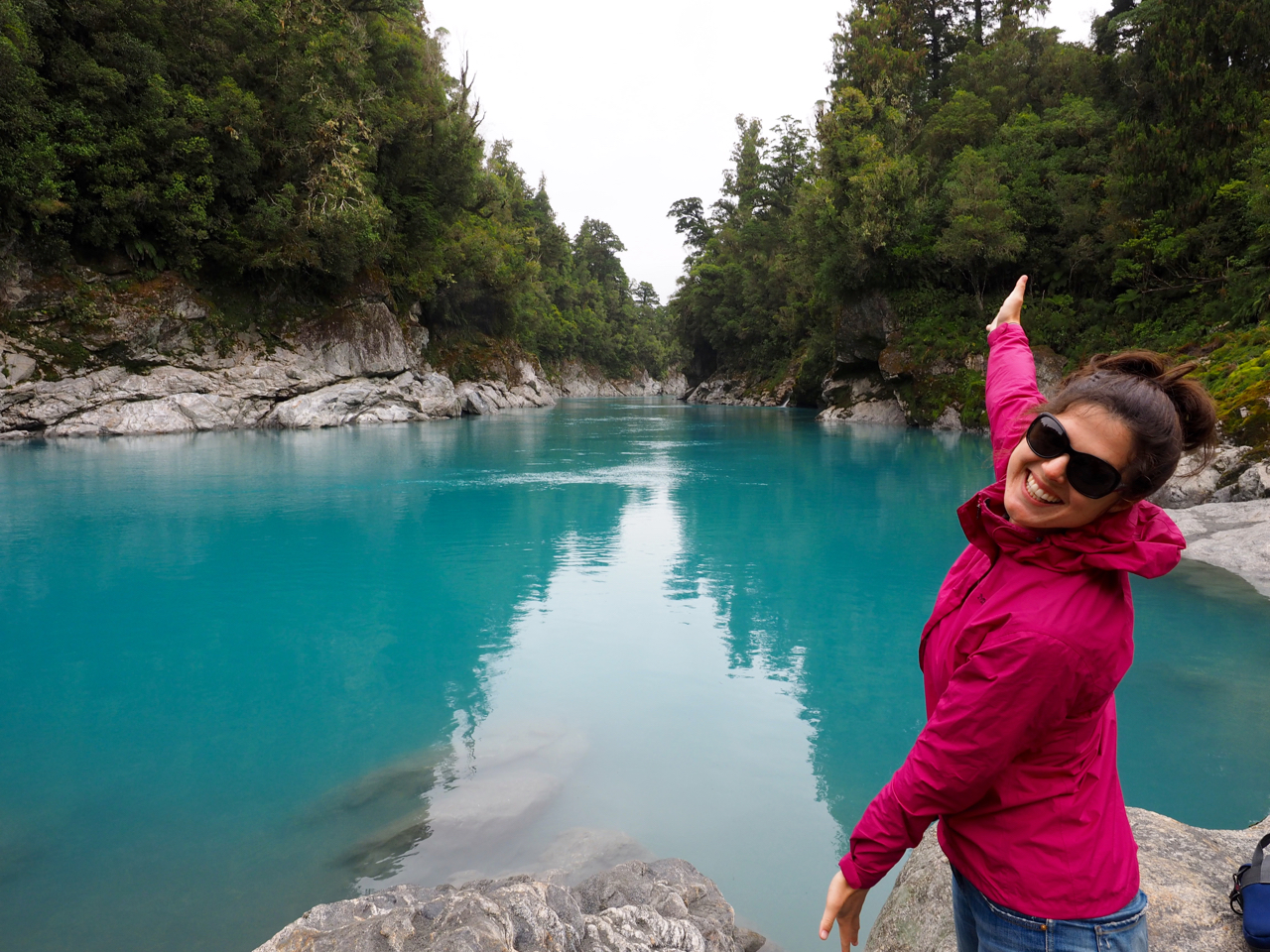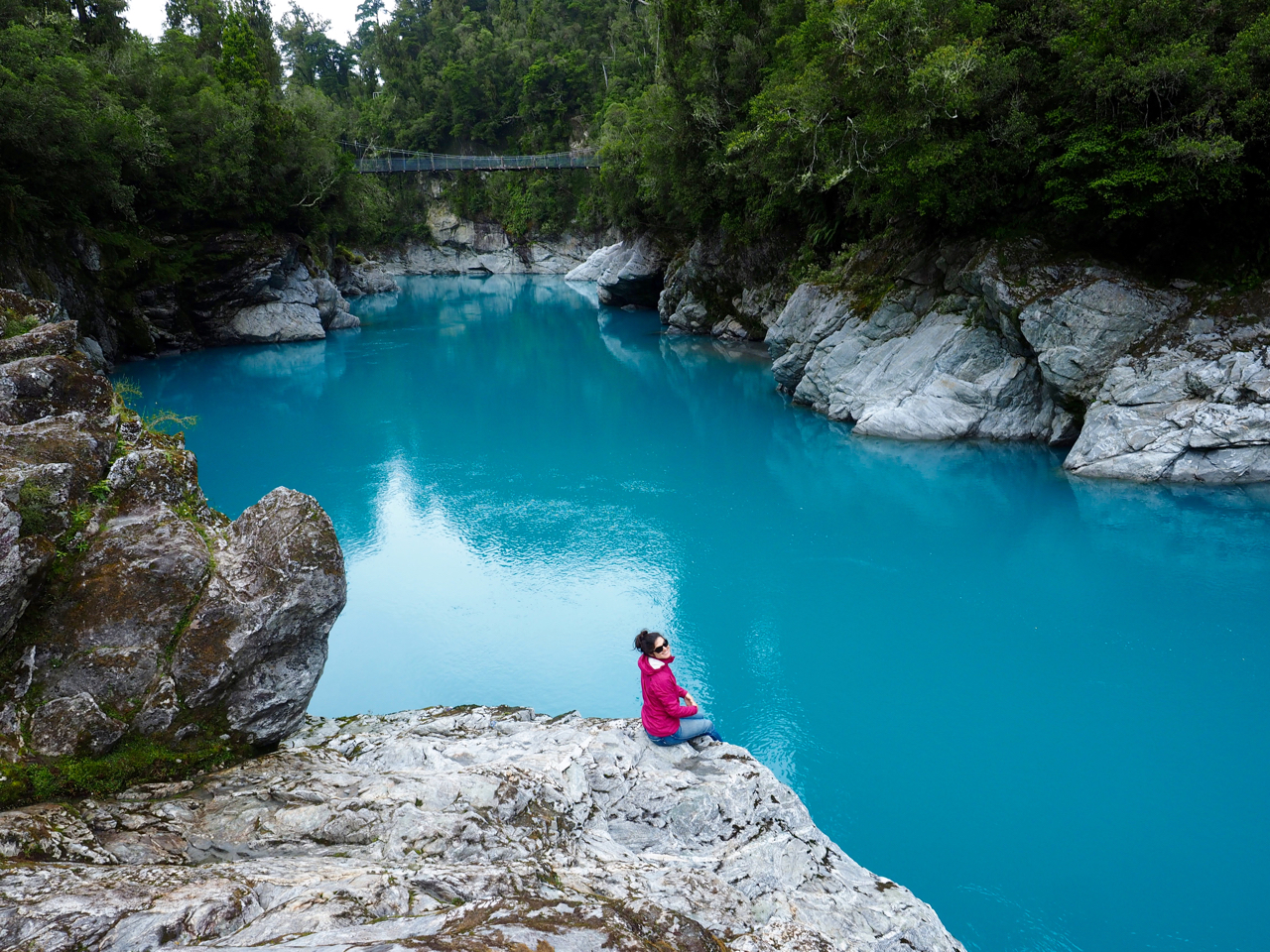Hokitika Gorge
Dominic and I spent a fair amount of time trying to name the blue of the water in the Hokitika Gorge: cornflower? powder blue? cyan or cerulean? It was a tough call. The water was milky enough to be reflective, even on the cloud covered day that we visited the gorge. Hokitika is on the west coast of the South Island; in a flight from the sand flies, we had left Lake Daniell and hooked a sharp right toward the shore. We found excellent accommodation outside of Hokitika, a boutique hotel and restaurant that let us pitch our tent out back and pay for delicious eggs benedict and (heavenly) hot showers.
Naturally, we spent the day exploring the gorge, the area's primary highlight. It was spectacular, with all the trappings of the South Island we had come to expect: swinging bridges, luscious ferns, mosses, and trees, sand flies that wouldn't quit, and water the likes of which we had never seen before. The nearby signage explained that the water got its blue color as a result of being glaciel run off, an explanation that didn't sit particularly well with us as we had seen a fair amount of glacial run off that wasn't this striking color. We asked our pal Dirk of s/v Peregrine, who happens to an oceanographer who worked with NASA analyzing the properties of water on Earth based on satellite imaging (a super handy dude to be hanging out with while touring the geological intrigues of New Zealand), and he explained that, like the Emerald Lakes in Tongariro, the color of the water was due to algae present, not its glacial history. He also said that the blueness of glaciers has to do with the simple fact that glaciers are made up of ice, and all ice filters out reds and appears blue. Any chunk of ice, he said, if large enough, will appear blue.
So, then, shall we call it algal blue? Azure or ultramarine? Algal marine? Dominic settled on Hokitika Gorge blue, but for me it's Hokitika gorgeous.



